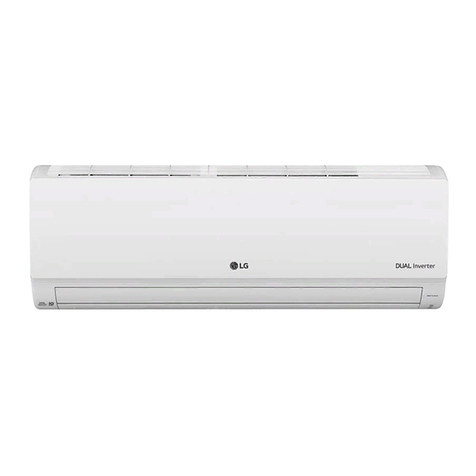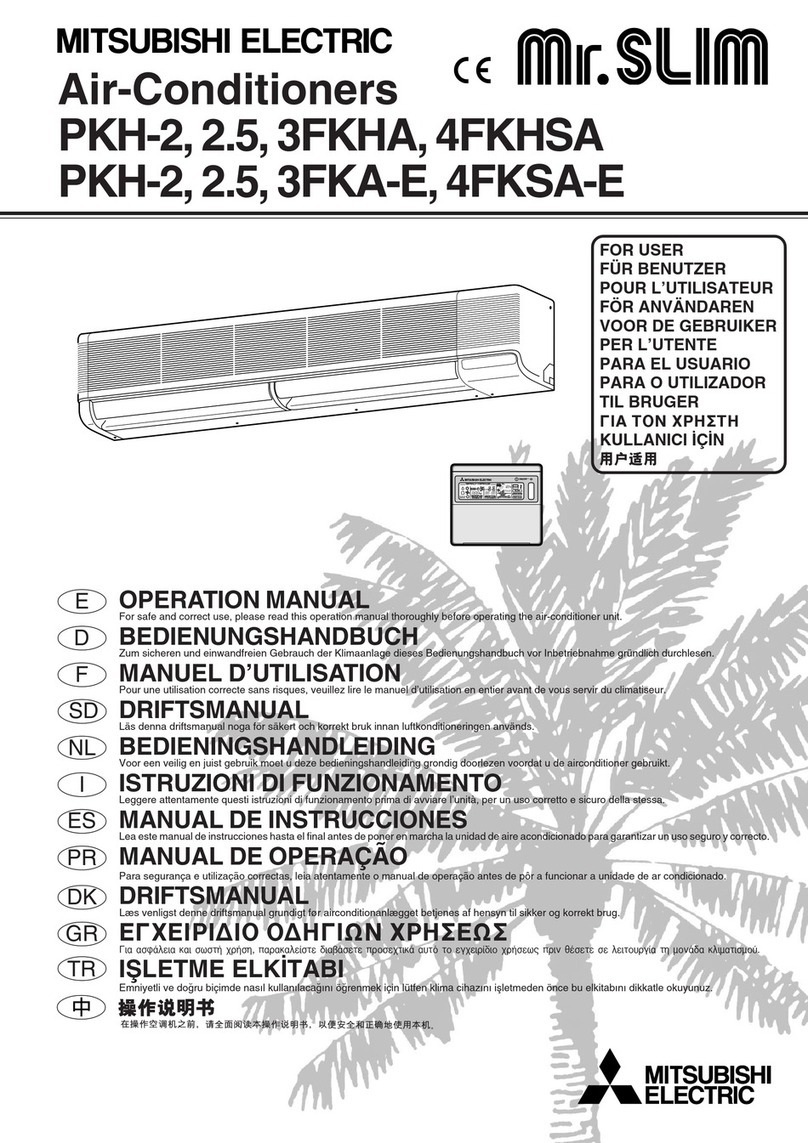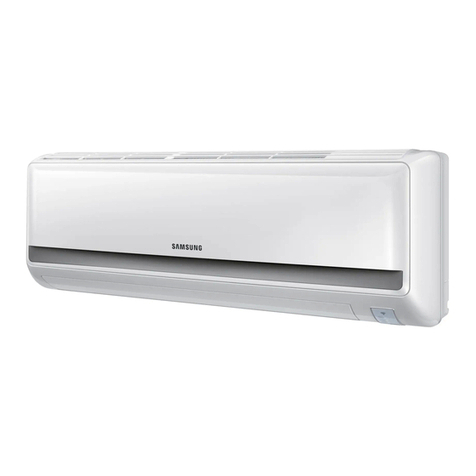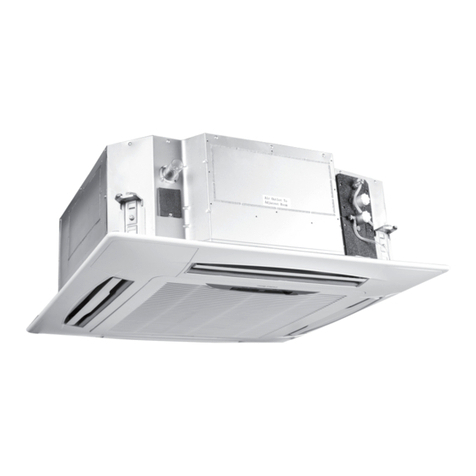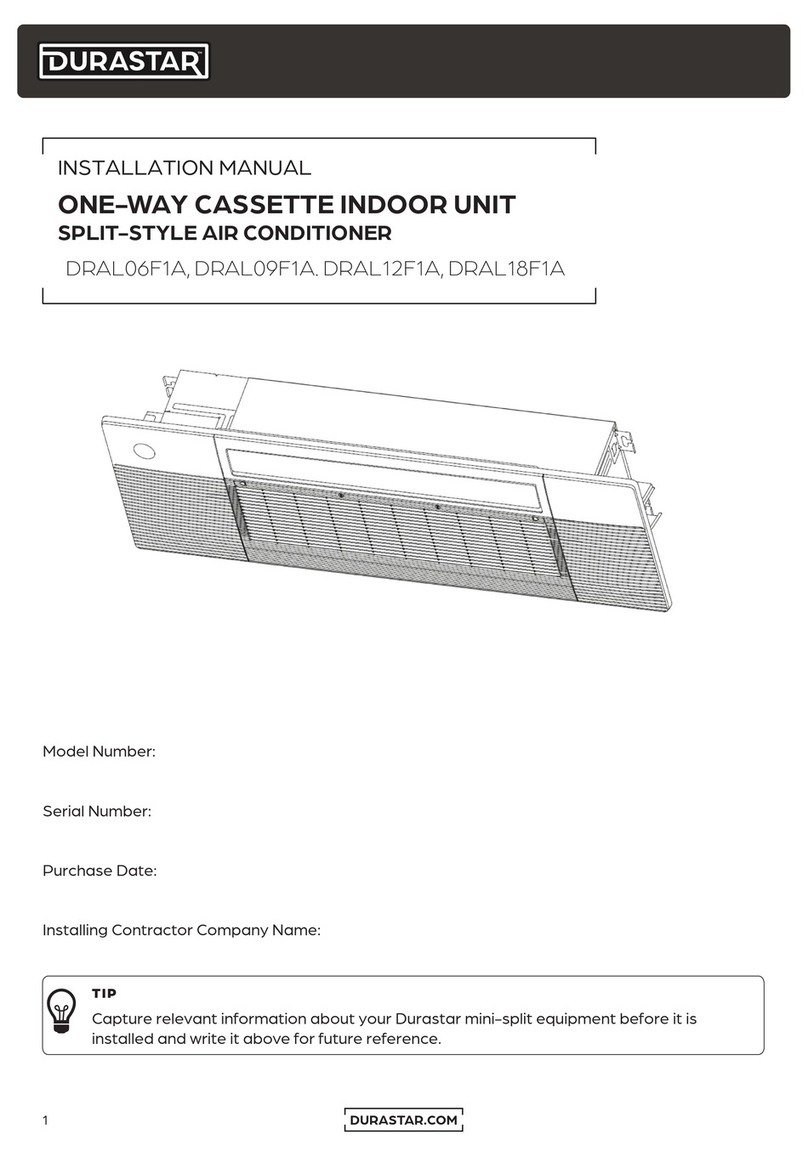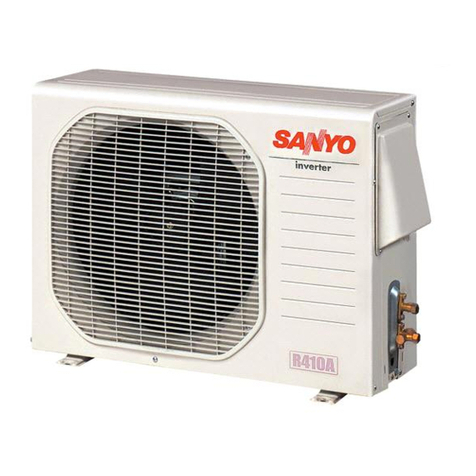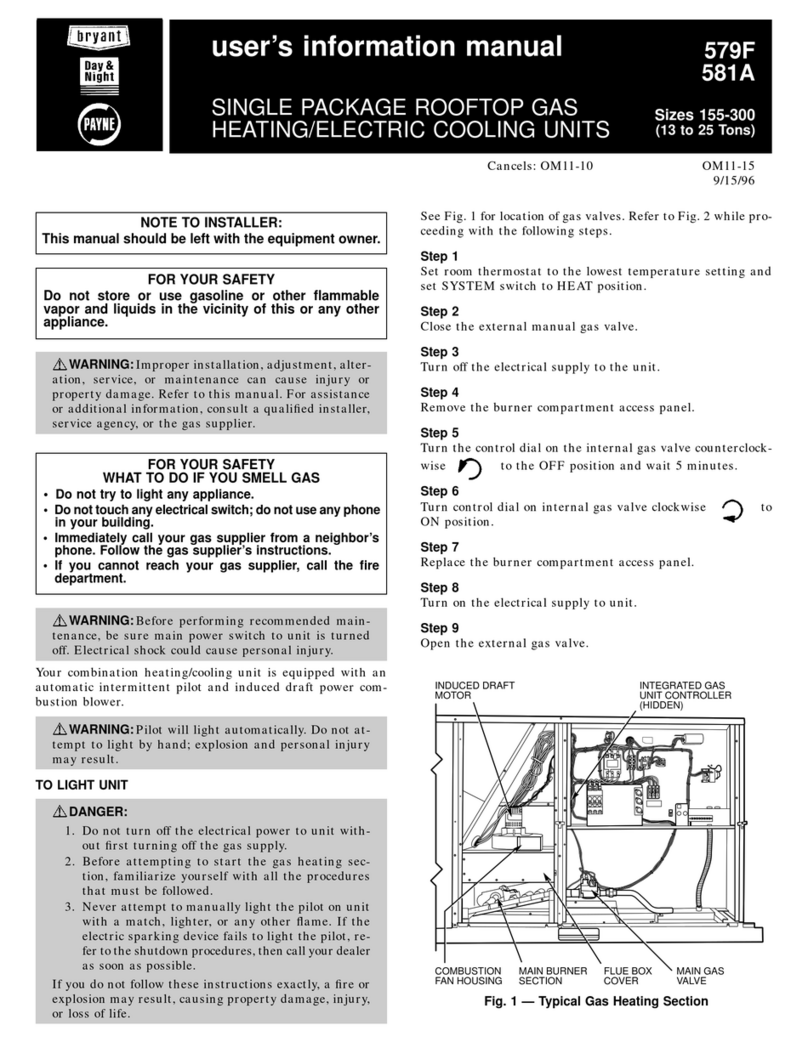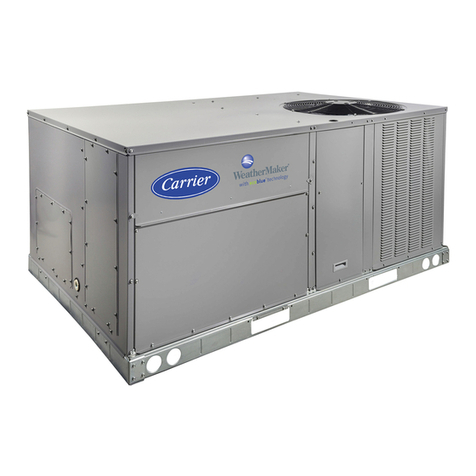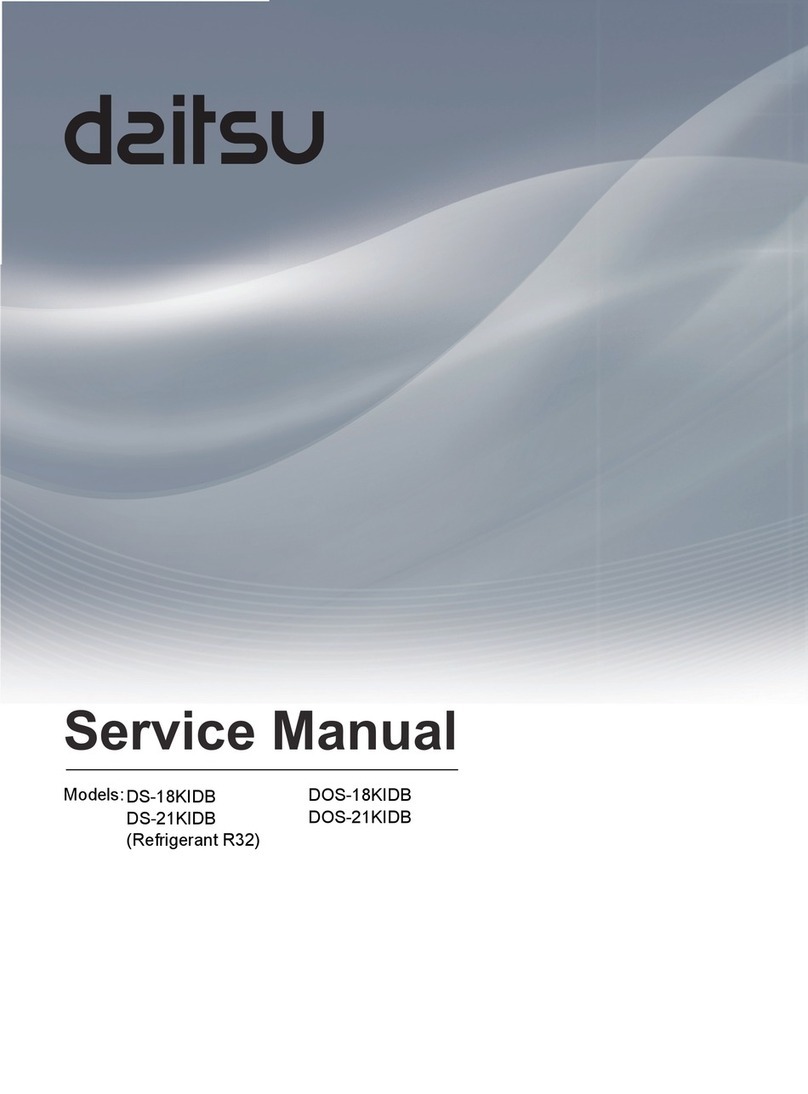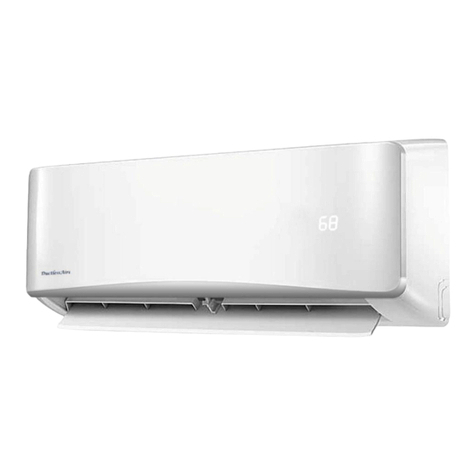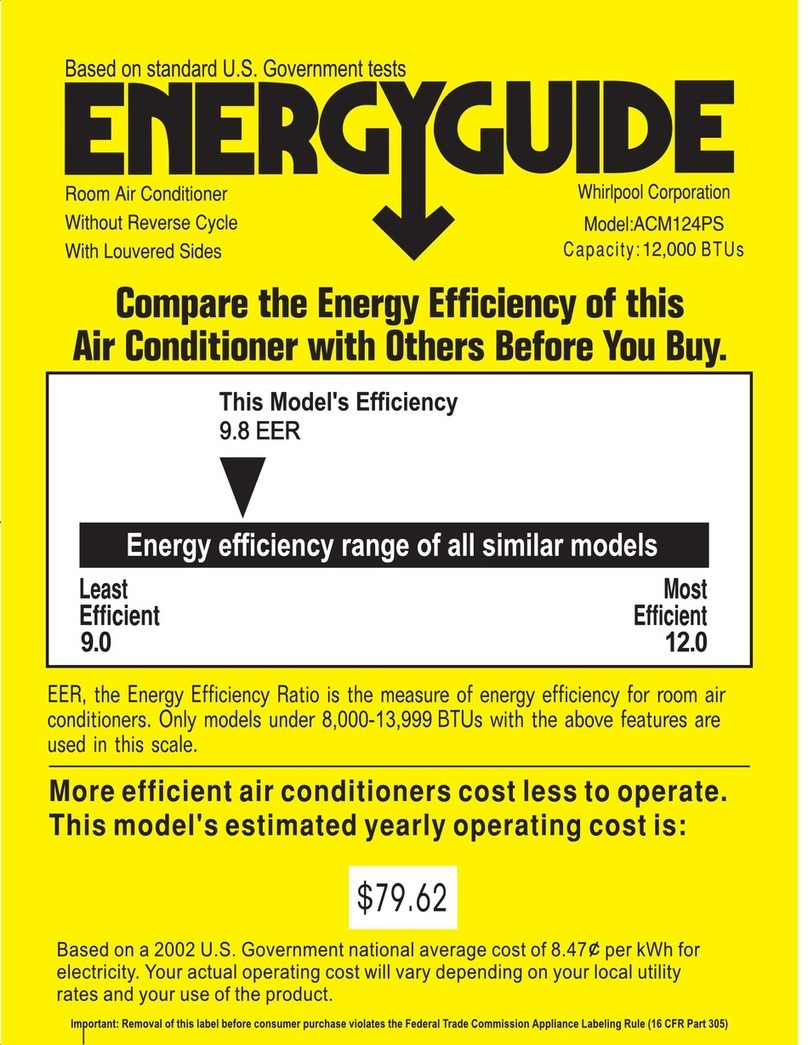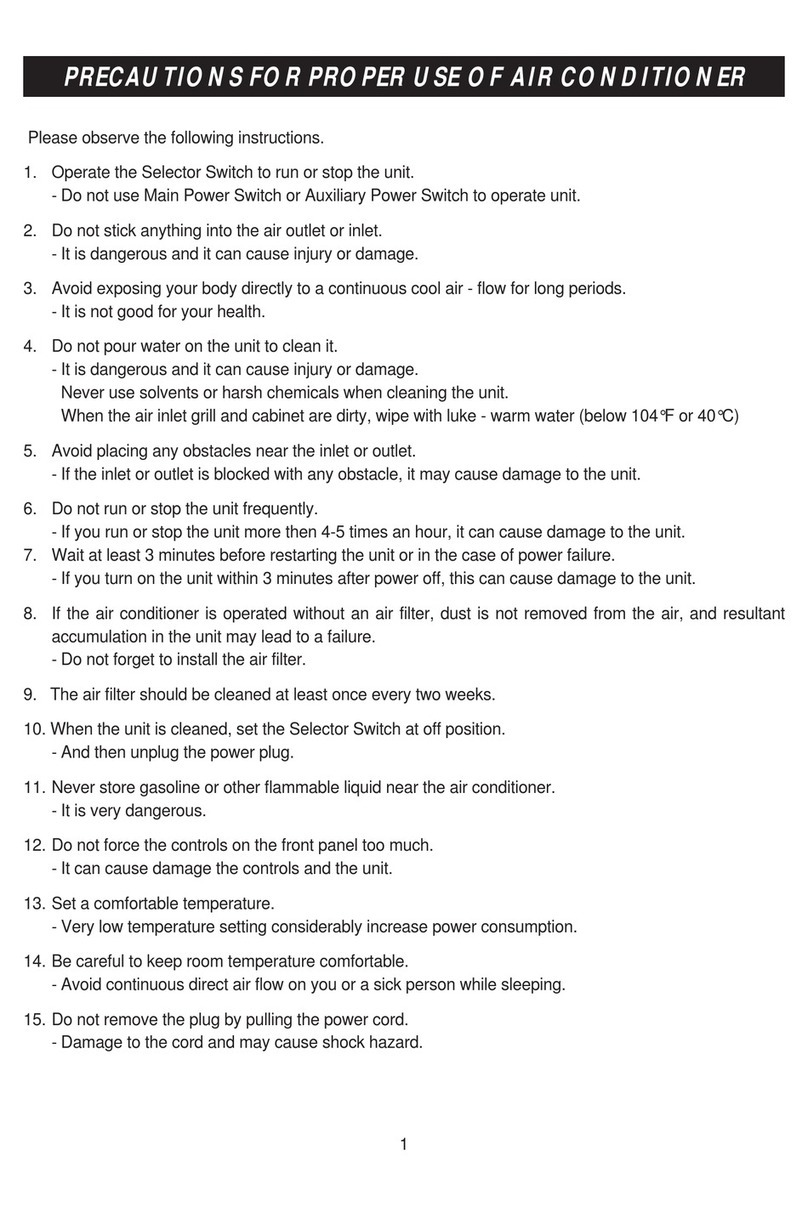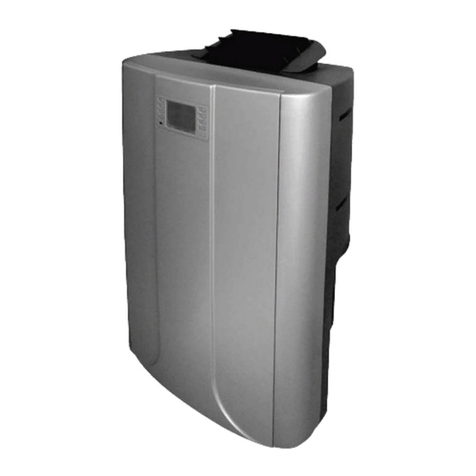Data Aire gForce GT series User manual


2
CONGRATULATIONS ON THE SELECTION OF A DATA AIRE PRECISION ENVIRONMENTAL
CONTROL SYSTEM. PROPER INSTALLATION, OPERATION AND MAINTENANCE OF THIS
EQUIPMENT WILL ENSURE YEARS OF OPTIMAL PERFORMANCE.
THERE ARE SEPARATE INSTALLATION, OPERATION AND MAINTENANCE (IOM)
MANUALS FOR OTHER COMPONENTS OF YOUR DATA AIRE PRECISION COOLING
SYSTEM INCLUDING DAP™III, AIR COOLED CONDENSERS AND FLUID COOLERS.
This manual is intended to assist trained service personnel by providing
necessary guidelines for this particular equipment. Service to Data Aire units
should be done by qualied individuals with an adequate background in areas
such as HVAC, electrical, plumbing and electronics, as applicable.
Service performed by unauthorized or unqualied technicians may void
manufacturers’ warranties and could result in property damage and/or personal
injury.
Special care should be given to those area where these symbols appear.
Data Aire, Inc. reserves the right to make design changes for the purposes
of product improvement, or to withdraw any design without notice.

3
1.0 INSTALLATION .................................................................................................. 6
1.1 Room Considerations............................................................................................ 6
1.2 Inspection.............................................................................................................. 6
1.3 Rigging .................................................................................................................. 6
1.4 Locating the Unit ................................................................................................... 7
1.4.1 DownowUnits...................................................................................................... 7
1.4.2 UpowUnits .......................................................................................................... 8
1.5 Paperwork ............................................................................................................. 8
1.6 Storage.................................................................................................................. 8
2.0 PIPING ................................................................................................................ 9
2.1 Air Cooled Unit Piping ........................................................................................... 9
2.1.1 Discharge Lines..................................................................................................... 9
2.1.2 Liquid Lines ......................................................................................................... 10
2.1.3 Suction Lines........................................................................................................ 10
2.1.4 Connection Sizes, Air Cooled Units......................................................................11
2.1.5 Field Piping, Remote Condenser .........................................................................11
2.1.6 Field Piping, Remote Condensing Unit ............................................................... 12
2.2 Water/Glycol Cooled Unit Piping ......................................................................... 12
2.2.1 Field Piping, Glycol System................................................................................. 13
2.2.2 Connection Sizes, Water/Glycol Cooled Units .................................................... 13
2.2.3 Connection Sizes, Fluid Coolers ......................................................................... 13
2.3 Auxiliary Chilled Water Coil Piping ...................................................................... 14
2.4 Condensate Drain Piping .................................................................................... 14
2.5 HumidierPiping ................................................................................................. 14
2.5.1SteamGeneratorHumidier................................................................................ 14
2.5.2DrySteamHumidier .......................................................................................... 15
2.6 Leak Testing ........................................................................................................ 15
2.7 Evacuation........................................................................................................... 15
3.0 ELECTRICAL CONNECTIONS ........................................................................ 16
3.1 Electrical Service. ............................................................................................... 16
3.2 Nameplate Ratings.............................................................................................. 16
3.3 Grounding............................................................................................................ 16
3.4 Voltage Tolerance................................................................................................ 16
3.5 Auxiliary Control Wiring....................................................................................... 16
3.6 Remote Shutdown............................................................................................... 17
3.7 Remote Alarm Contacts ...................................................................................... 18
3.8 Remote Sensors.................................................................................................. 18
3.9 Condensate Pumps............................................................................................. 18
3.10 Condensate Probe .............................................................................................. 18
3.11 Water Sensing Cable .......................................................................................... 18
3.12 EEV Connection.................................................................................................. 19
Table of Contents

4
Table of Contents, cont’d
4.0 CHARGING ........................................................................................................ 20
4.1 Voltage Phase Check .......................................................................................... 20
4.1.1 Evaporator........................................................................................................... 20
4.1.2. Secondary Heat Exchanger ................................................................................ 20
4.2 Air Cooled Systems............................................................................................. 20
4.2.1 Fan Speed Control System Charging.................................................................. 20
4.2.2 Flooded System Charging................................................................................... 21
4.3 Water/Glycol Cooled Systems............................................................................. 22
4.3.1 Water/Glycol Cooled Systems Charging ............................................................. 22
4.4 Refrigerant Handling ........................................................................................... 23
4.5 Important Refrigeration Components .................................................................. 23
4.5.1 Expansion Valve.................................................................................................. 23
4.5.2 High Pressure Cutout Switch .............................................................................. 23
4.5.3 Low Pressure Cutout Switch ............................................................................... 23
5.0 GLYCOL SYSTEMS ........................................................................................... 24
5.1 Glycol Concentration........................................................................................... 24
5.2 Internal(Fluid)Volume-DownowModels......................................................... 24
5.3 Internal(Fluid)Volume-UpowModels ............................................................. 24
5.4 Fluid Cooler Internal Volume ............................................................................... 25
5.5 Copper Piping Internal Volume............................................................................ 25
5.6 Freezing Point of Aqueous Solutions .................................................................. 25
6.0 CONTROLS ....................................................................................................... 26
6.1 dap4 Microprocessor Control Panel.................................................................... 26
6.2 Secondary Heat Exchangers............................................................................... 26
6.3 Wiring Diagrams.................................................................................................. 26
7.0 ELECTRONICALLY COMMUTATED MOTORS (EC MOTORS)........................ 26
7.1 Start-up with EC motors/plus fans....................................................................... 26
7.2 Testing................................................................................................................. 27
7.3 Protective features .............................................................................................. 27
7.4 Maintenance........................................................................................................ 27
8.0 REGULAR MAINTENANCE ITEMS .................................................................. 28
8.1 Airlters .............................................................................................................. 28
8.2 HumidierCanisters............................................................................................ 28
8.3 Fuses................................................................................................................... 28
8.4 Heating Elements................................................................................................ 28
8.5 Refrigerant Filter Drier......................................................................................... 28
9.0 WARRANTY ....................................................................................................... 29
10.0 CONTACT DATA AIRE ...................................................................................... 30

5
Table of Contents, cont’d
LINE SIZING CHART .......................................................................................................... 31
MONTHLY MAINTENANCE INSPECTION CHECKLIST.................................................... 32
QUARTERLY MAINTENANCE INSPECTION CHECKLIST................................................ 33
SUPERHEAT and SUCTION PRESSURE TROUBLE SHOOTING GUIDE ....................... 34
TEMPERATURE PRESSURE CHART................................................................................ 35

6
1.0 INSTALLATION
ThereisnointentonthepartofDataAire,Inc.todenelocalcodesorstatuteswhich
may supersede common trade practices. The manufacturer assumes no responsibility for
their interpretation. Consult local building codes and National Electrical Code (NEC) for
special installation requirements.
1.1 Room Considerations
Precision air conditioning equipment is designed to control spaces within close tolerances of tem-
peratureandhumidity.However,theroommustbebuiltwithapropervaporbarrier.Almofpoly-
ethyleneisoftenusedonwallsandceilings.Wallsandoorsmustalsobepaintedwithvapor-seal
paint. Failure to provide a vapor barrier can compromise space conditions.
Introduction of outside air into the space should be minimized. Outside air in excess of 5% of the
totalcirculatedairvolumecanhaveasignicanteffectontheoverallspaceconditionsandresultin
poor space control.
1.2 Inspection
This Data Aire unit has been factory run-tested and has gone through a comprehensive inspec-
tion prior to its packaging and shipment to ensure that it arrives in excellent condition. However,
shipping damage can occur and a visual inspection of the outer crating immediately upon delivery
should be performed.
Note any external damage or transportation damage on the freight carrier’s forms. Inspect the unit
itselfforinternaldamage.Aclaimshouldbeledwiththeshippingcompanyiftheequipmentis
damaged or incomplete.
Looseitemssuchasremotecontrolpanels,disconnectswitchhandles,sparebeltsandsparelters
are packed inside the unit. Refer to the yellow shipping tag located on the unit door for details.
Freight damage claims are the responsibility of the purchaser. Action to recover losses
shouldbeledimmediately.Pleasenotifyfactorypersonnelofanyclaims.
1.3 Rigging
Move the unit in its upright position to the installation site. It is recommended that the unit be pro-
tected from damage to the decorative doors during any storage or moving. Removal of the decora-
tive doors is easily accomplished and may be done without moving the equipment.
The shipping skid should be left in place if the unit is being moved with a forklift. If the unit is being
lifted, use spreader bars to prevent damage to the doors and panels.
The unit has 3/4” holes in the shipping skid to which casters with 3/4” stems can be attached. This
allows easy movement down halls, into elevators and through doorways. If clearance is a problem
the casters may be inserted directly into the bottom of the 1” tubular steel corner posts at the bottom
of the unit.

7
Warning: Improper lifting or moving of equipment may result in damage to decorative doors,
panels or frame members.
1.4 Locating the Unit
Wheninstallingtheunit,sufcientspacemustbeallowedforairowclearance,wiring,plumbingand
service access. It is recommended that each side and front have a clearance of at least 36” to allow
the doors to swing open and for servicing the unit.
The doors on some sides may not require as much service clearance. Refer to the particular unit
component breakdown drawings for assistance. Rear clearance is not required, but 1” to 2” of clear-
ance is suggested.
For the best air distribution, the unit should be centered against the longest wall, distributing the
cold air as close to heat load as possible, unless the unit is ducted. The unit should not be placed
near any corner of the room or at the end of a long, narrow room. Multiple units should be evenly
spaced, as far apart as possible.
Note to Installing Contractor:Condensationformationandfrequenthumidierush-
ing are normal functions of this equipment. Proper drain connections must be made
to ensure proper removal. Unit will require water connections for condensate removal
andpossiblyforhumidiermakeupwater,chilledwaterand/orhotwater.Installationof
units above equipment that could sustain water damage should be avoided.
1.4.1 Downow Units
Downowunitswilltypicallysitonanelevatedooringsystemknownasaraisedoor.Theunitdis-
chargesairdownwardwhichpressurizestheraisedoorandchannelsupwardthroughperforated
oortiles.Locationandquantityofperforatedtileswilldictateproperairdistribution.Iftheraised
oorisstrongenoughtosupporttheunitandlocalcodespermit,theunitcanbeplaceddirectlyon
top with cutouts made for the discharge openings.
There may be additional support required in the form of adjustable jackstands. These are adjust-
able, threaded leveling rods which support the unit in each of the corners and in the center on longer
length units. Tighten the locknuts provided with each jackstand. The base plate can rest on the
oororonvibrationpads.
Floorstandsarealsoawayofsupportingtheunit.Theseareorderedtotheheightoftheoorwith
levelingrodstoallowadjustment.Theoorstandhaslipsineachcornertoalignwiththeunitwhich
isplacedontop.Itisrecommendedthattheunitframebeboltedorscrewedtotheoorstandfrom
below. Local building codes may dictate this procedure. After installation, the raised is typically built
around the unit.
Theraisedoorservesasthedistributionplenumforairondownowunits.Cables,pip-
ing,wiringraceways,inadequateoorheightandanyotherrestrictionscaninhibitproper
airow.Careshouldbetakentoavoidrestrictions.

8
1.4.2 Upow Units
Upowunitswilltypicallybesupportedbyvibrationisolationpadsand/oroorstandswhichmayalso
include leveling screws. An air discharge plenum may be factory provided which ships loose and
must be attached at the top of the unit frame.
Alternately,anairdistributionplenummustbeeldfabricatedwithsupplygrillestodistributethe
air. Units are shipped with EC (Electronically Commutated) motors and “plug fans”. Fan speed is
factory set based on order. Fan speed can be changed in 1% increments through the unit’s micro-
processor controller, Data Alarm Processor 4 (dap4). See the dap4 operation manual for details
and recommended settings.
1.5 Paperwork
Each Data Aire unit ships with a start-up sheet that should be completed during installation. Also
included in the paperwork is a warranty/information packet that provides important wiring diagrams,
speciccomponentliterature,warrantyregistrationcardsandothervaluablepaperwork,includinga
copy of this Installation/Operation and Maintenance manual.
A yellow tag is attached to the outside decorative door to indicate articles that may have been pack-
aged and shipped loose within the unit cabinet. Typically this would be jackstands, condensate
pumps and other loose components that are not factory mounted.
It is the responsibility of the installing contractor to return the start-up sheet and warranty
registration card to Data Aire for proper activation of the unit warranty. Failure to do so
may cause delays and some cases void the warranty.
1.6 Storage
Your Data Aire equipment comes ready for immediate installation. In some instances it may be
necessary to store the equipment for a period of time. If you must store the equipment it should
be done in a dry area, out of the weather, protected from damage by other equipment in storage or
transportation equipment, never stacked, and avoid frequent relocation.
If equipment is stored for longer than 30 days special precautions must be taken to avoid coil dam-
age. All coils should be charged and sealed with a low pressure (1-3 PSIG) inert gas, such as
nitrogen. This prevents contaminates from entering the coils: then when the seal is broken at in-
stallation,therushofescapinggasveriesthecoilisleakfree.Ifcoilsarenotchargedandsealed
condensation mixes with air pollutants forming a weak acid and over time can cause pin hole leaks
to develop in the coil tubes.
When equipment is installed after storage caution should be taken to inspect and replace, if re-
quired, rubber components. All moving parts, such as fans and motors, should be hand tested to
ensure that they are free and clear prior to start-up. Finally, verify that all lubrication fresh and full.

9
2.0 PIPING
2.1 Air Cooled Unit Piping
Refer to the attached line sizing chart on page 29 for a guideline for sizing refrigerant lines. The
ultimate responsibility for line size selection is that of the installing contractor or design engineer.
Data Aire does not assume this responsibility. The chart covers distances up to 200 equivalent feet.
For installations beyond this distance, consult ASHRAE or similar references.
Standardpipingpracticemustbeusedtoensureproperoilreturnandefcientoperation.
The interconnecting lines to the remote air cooled or condensing unit must be installed by
aqualiedrefrigerationmechanic.
2.1.1 Discharge Lines
Discharge lines, also called hot gas lines, should be trapped at the top (inverted) and bottom as
well as every 15 to 20 feet of vertical rise. Discharge check valves are required on all installations,
especially those where there are long pipe runs or cold climates. For air-cooled units built after
3/14/2017, the discharge check valves are already installed inside the evaporator section and do
not need to be installed external to the unit. For units built before this date, the check valves must
beeldsuppliedandinstalledexternallytotheevaporatorsection.Ifthereisdoubtastowhether
or not the check valve is already installed in the unit, look for it on the hot gas line close to the exit
point of the unit (see example picture below). The externally installed check valve should be placed
from six (6) to ten (10) feet (1.8 to 3.1 m) from the compressor.
Note: Picture is only intended to show an example of a common check valve installation.
Itmaynotrepresentyourspecicunit,checkvalvesize,locationororientation.

10
Thecheckvalvewillpreventowfromthecondensertothecompressorduringthe“off”cycle.
The discharge, suction and liquid lines need to be refrigerant grade copper and in accordance with
local code. All refrigeration piping should be installed with high temperature brazed joints. When
brazing, a supply of nitrogen gas needs to be fed through the refrigerant lines. Be sure to open the
other end of the refrigerant line to allow the nitrogen to bleed off and not pressurize the piping. Pre-
vailing good refrigeration practices should be employed for piping support, leak testing, dehydration
andchargingtherefrigerantcircuits.Duringtheinstallationthelinesshouldbecappedoffandlled
with dry nitrogen at the end of each day’s work or until the system is completed and sealed.
Data Aire recommends a silver/phosphorus/copper alloy with 5 to 15% silver be used to braze the
refrigerantlinesetstotheindoorandoutdoorunits.Nitrogenneedstobeowingthroughthelines
to eliminate carbon deposit build-up on the inside of the joints. Carbon could contaminate the re-
frigerant and restrict the metering device.
Piping must be supported within 18” of the inlet and outlet connections. The inlet connection is
located on the top header of all units. The discharge outlet is located at the bottom of the header.
Discharge line pressure drop should not exceed 6 PSI for R-407C and 9 PSI for R-410A. Recom-
mended gas velocity for proper oil return is 1,000 FPM. Slope horizontal lines downward in the
directionoftherefrigerantow(1/2”foreverytenfeetoflinelength).Dischargelinesdonotrequire
insulation but due to the high temperatures of the refrigerant inside the line, the pipes may be insu-
lated to protect against burns to individuals near or around the lines.
2.1.2 Liquid Lines
Liquid line size is determined by pressure drop and velocity. The liquid line pressure drop for R-
407C should not exceed 5 PSI or 9 PSI for R-410A. The recommended velocity should be between
200 and 300 FPM. To avoid excessive liquid line pressure drop, the air cooled condenser should
be located above or at the same level as the evaporator. Insulation of liquid lines is not required but
canbeusefulinpreventingcondensationfromformingandtoavoidashingonlongpiperuns.
2.1.3 Suction Lines
Some applications call for the compressor to be mounted as part of the condenser (more commonly
referredtoasacondensingunit).Condensingunitsrequireeldpipingofliquidandsuctionlines.
Suction lines are trapped similarly to discharge lines. Common practice for suction line selection
and installation should be followed. Suction lines should always be insulated.

11
2.1.4 Connection Sizes, Air Cooled Units
Model Number Hot Gas Line Liquid Line Suction Line
GTA*007 1/2” O.D. 1/2” O.D. 3/4” O.D.
GTA*011 1/2” O.D. 1/2” O.D. 3/4” O.D.
GTA*014 1/2” O.D. 1/2” O.D. 3/4” O.D.
GTA*018 1/2” O.D. 1/2” O.D. 3/4” O.D.
GTA*028 N/A 5/8” O.D. 1 3/8” O.D.
GTA*035 N/A 5/8” O.D. 1 3/8” O.D.
GTA*046 N/A 7/8” O.D. 1 3/8” O.D.
*D=DownowU=Upow
Note: Units will have a liquid line and either a hot gas or suction line.
Field connections at the indoor evaporator and remote condenser or condensing unit will
notnecessarilybethesameastheeldpipesizerequired.Insomecasesthesewillvary
signicantly.
2.1.5 Field Piping, Remote Condenser/Condensing Unit Above Evaporator

12
2.1.6 Field Piping, Remote Condenser/Condensing Unit Below Evaporator
2.2 Water/Glycol Cooled Unit Piping
Therequiredeldinstalleduidcoolerpipesizesmayormaynotbethesameastheconnection
sizesontheuidcooler(referto2.2.2and2.2.3forconnectionsizing).Thiswilldependonthe
length of pipe and the calculated pressure drop of peripheral components.
Water cooled units may also be connected to building water or tower water sources. Pipe size will
dependonlengthofrunandthemaximumwaterowrequired.
Shut-offvalves(eldprovided)shouldbeinstalledwithinafewfeetoftheinletandoutletconnec-
tionsoftheevaporatortoallowtheunittobeisolatedforservice.Drain/llvalvesshouldbelocated
at the lowest point on the connected piping.
Allwater/glycolcooledunitsareshippedwithplate/nheatexchangersasstandardequipment.A
strainerisshippedlooseandistobeeldinstalledinthesupplylinewithshut-offvalves(eldpro-
vided) before and after the strainer. The strainers and water/glycol piping must be cleaned on a
periodic basis. If the unit is shipped with shell and tube condensers strainers are not required not
shipped with the unit.
All water pipes have a cap installed on the end of the pipe for pressure testing the system. These
caps need to be removed before installing the piping to the units. Use a tube cutter for smaller pipes
and a reciprocating saw with a metal cutting blade for larger pipe sizes or if there is a clearance
problem. All connections need to be cleaned before connections are brazed together.

13
One of the most common problems in a water/glycol system is the presence of air in the
condenser water loop. Air vents must be installed in various locations the piping system
to purge the air.
Water/glycol system piping may include a centrifugal pump (or pumps for redundancy). Pumps
must be primed before operating per the pump manufacturer’s guidelines.
2.2.1 Field Piping, Glycol System
2.2.2 Connection Sizes, Water/Glycol Cooled Units
Model Number Water In Water Out
GTW or G*007 3/4” O.D. 3/4” O.D.
GTW or G*011 3/4” O.D. 3/4” O.D.
GTW or G*014 1-1/8” O.D. 1-1/8” O.D.
GTW or G*018 1-1/8” O.D. 1-1/8” O.D.
GTW or G*028 1-5/8” O.D. 1-5/8” O.D.
GTW or G*035 1-5/8” O.D. 1-5/8” O.D.
GTW or G*046 1-5/8” O.D. 1-5/8” O.D.
*-D-downow,U-upow
2.2.3 Connection Sizes, Fluid Coolers
Model Number Water In/Out Model Number Water In/Out
GHFC-21 1-5/8” O.D. GHFC-130 2-5/8” O.D.
GHFC-25 1-5/8” O.D. GHFC-141 2-5/8” O.D.
GHFC-32 1-5/8” O.D. GHFC-156 2-1/8” O.D.
GHFC-39 2-1/8” O.D. GHFC-176 2-5/8” O.D.
GHFC-53 2-1/8” O.D. GHFC-200 2-5/8” O.D.
GHFC-60 2-5/8” O.D. GHFC-215 2-5/8” O.D.

14
GHFC-74 2-1/8” O.D. GHFC-264 2-5/8” O.D.
GHFC-84 2-5/8” O.D. GHFC-281 2-5/8” O.D.
GHFC-99 2-5/8” O.D. GHFC-310 2-5/8” O.D.
GHFC-106 2-1/8” O.D. GHFC-352 2-5/8” O.D.
Models GHFC-200 and larger are double-wide units. Although the header connection for
each section is 2-5/8”, each unit comes with a factory provided header manifold kit with
3-1/8”eldconnections.
2.3 Auxiliary Chilled Water/Energy Saver Coil Piping
Units with Auxiliary Chilled Water cooling coil require a separate source of chilled water. These
chilled water connection sizes will be equal to the condenser water connection sizes on the chart in
Section 2.2.2. Units with an Energy Saver cooling coil have shared piping with the condenser sup-
ply and therefore do not require a separate water source.
All chilled water pipes have a cap installed on the end of the pipe for factory pressure testing of the
system. These caps need to be removed before installing the water piping to the unit. Use a tube
cutter for smaller pipes and reciprocating saw with a metal cutting blade for larger pipes or if there is
a clearance problem. All connections need to be cleaned before connections are brazed together.
2.4 Condensate Drain Piping
Every indoor unit has a 3/4” copper stub provided for condensate removal. A union is recommended
attheeldconnectionwhichwillpermiteasydisconnectionfromtheunitforcleaning.
A trap should be built into the drain line to prevent air from backing up into the unit. Drain lines
should be pitched downward not less than 1/4” for each ten feet of horizontal run. Do not reduce
the size of the drain line.
Some applications have no convenient means of allowing a gravity drain. When required, a con-
densate pump can be used. Condensate pumps are either factory mounted or shipped loose. Fac-
tory mounted condensate pumps do not require a separate power source.
Condensatepumpsshipped loose (or eld provided)typicallyrequireadedicated110 volt power
source. Field pipe connections must be made to the pump discharge connection. A check valve
must be installed to prevent short cycling. See condensate pump electrical requirements in Section
3.9.
2.5 Humidier Piping
2.5.1 Steam Generator Humidier
ThestandardhumidierongForcesystemsisasteamgeneratortypewithdisposablecylinder.The
humidiermakeupwatershouldbebroughttothehumidierthroughtheeldconnectionopening
using1/4”coppertubing.Acompressionttingisprovidedatthehumidier.
A shutoff valve should be provided outside the air conditioner to allow disconnection for service.
An in-line water pressure regulator and strainer should be installed. Water pressure should be set
between 20 and 80 PSI.

15
Thehumidierhasadrainatthebottomwhichisfactorypipedtothemaincondensatedrainline.
Thedispersiontubealsohasadrainline.Noadditionaleldpipingisrequired.
2.5.2 Dry Steam Humidier
Theoptionaldrysteamhumidierrequiresastrainerontheinletsteamline.Anoutletconnection
witheld-providedsteamtrapisalsorequired.Steampressureistypical10-15PSI.
2.6 Leak Testing
No installation is complete until the entire system has been thoroughly checked for leaks. This
includescheckingtherefrigeranttubing,arettings,pressurecontrols,Shraederttingsandcom-
pressorrota-lockservicevalves.Checkboththeeldandfactoryconnections,
Inadditiontorefrigerationsystem,checkallcondenserwaterlines,humidierwatermake-
up lines, condensate lines, condensate pumps, chilled water lines, centrifugal pumps and
uidcooler(whereapplicable).
When handling or recovering refrigerant it is not permissible to release refrigerant into the
atmosphere. Many leak-test methods recommended in the past are no longer possible.
Current standard practices must be used.
Pressurize the system’s circuit to 150 PSIG (1034 kPa) by using dry nitrogen with a trace of refrig-
erant.Checktheentiresystemforleakswithasuitableleaknder(perlocalcode)includingbut
notlimitedtoallbrazejoints,caps,ttings,andarenutsonbotheldandfactoryfurnishedcom-
ponents. After completion of leak testing, release test pressure and pull a vacuum on the system.
Tighteningofttingsandvalvesistheresponsibilityoftheinstallingcontractor.
2.7 Evacuation
Evacuate the refrigerant lines, condenser coil and evaporator coil to 250 microns or lower (a micron
gauge and 2-stage vacuum pump are required). Valve off and turn off the vacuum pump and wait at
least 15 minutes to make sure the micron gauge reading does not go back above 700 microns. If it
does, restart the vacuum pump and evacuate until the system reaches 250 microns. If the system
still does not hold the pressure below 700 microns the system needs to be rechecked for leaks.
After the system has been satisfactorily evacuated the lines can be charged with refrigerant. Con-
nect the pressure gauge manifold set to the high and low ports near the compressor. Connect the
charging line to the refrigerant tank and set it for liquid feed. Open the refrigerant tank valve and
purge the line at the manifold, then open the high side valve on the manifold only and allow the
refrigeranttoowuntilthesystempressureequalizes.Atthispointthesystemwillhave75to80%
of the total refrigerant charge. Start the blower and then the compressor checking the operating
pressures and temperatures.
DO NOT APPLY POWER TO THE COMPRESSOR WHEN IN A VACUUM

16
3.0 ELECTRICAL CONNECTIONS
Before proceeding with the electrical connections, make certain that the volts, hertz and
phasecorrespondtothatspeciedontheunitelectricalnameplate.Usecopperconduc-
tors only.
3.1 Electrical Service
Checktobesuretheserviceprovidedbytheutilityissufcienttohandletheadditionalloadimposed
by this equipment. Most units with secondary heat exchangers will require a separate power source
andeldprovided,interconnectingwires(seeSection3.5).
Remotecondenserswilltypicallyrequireonepowersource.Glycolsystemswithuidcoolersand
loosepump(s)typicallyrequireonepowersourcefortheuidcoolerandwillrequireoneadditional
source for single pump or two additional sources for dual pumps. Systems where the pump(s) are
mountedandpipedintegraltotheuidcoolerwillusuallyrequireasinglepowersource.
3.2 Nameplate Ratings
Refer to the unit electrical nameplate for equipment electrical requirements. Minimum circuit am-
pacity, (MCA) also known as wire sizing amps, will dictate the minimum required wire gauge. Maxi-
mum Overcurrent Protection (MOP) device amps will dictate the maximum breaker or fuse size.
3.3 Grounding
The unit cabinet must have an uninterrupted true earth ground. An electrical ground wire of ad-
equate size must be connected to the ground lug provided inside the main electrical box.
3.4 Voltage Tolerance
The supply voltage to the unit must be within 10% of the voltage indicated on the unit electrical
nameplate. Phase to phase imbalance must not exceed 3%. The local utility company should be
contacted for correction of improper line voltage. Deviation from voltage ratings can cause prema-
ture failures and possibly void unit warranties.
Check the wiring connections in the unit control panel to ensure they are tight. Screw
terminals may become loose in transit. Tightening of wiring connections is the respon-
sibility of the installing contractor.
3.5 Auxiliary Control Wiring
Theinterconnectionofauxiliarycontrolwiringforremoteheatexchangers(condensersanduid
coolers) requires the connection of two (2) - 18-gauge wires for installations up to 150 feet (45 m) or
16-gauge wires for installations from 151 feet (46 m) up to 200 feet (61 m) from the electrical control
box of the indoor evaporator to the electrical control box of the remote heat exchanger. Condensing
units (i.e., where the compressor(s) are mounted in the remote heat exchanger) will typically require
(4) or more wiring connection points and may require heavier gauge wire. In this case, the installing
contractor must follow the applicable electrical codes to determine the required wire gauge.
Because of the wide variety of indoor evaporators and remote heat exchangers offer by Data Aire,
the installing contractor must refer to the schematic which is provided inside the electrical control
box of each unit, for the required auxiliary control wiring interconnection terminal points.

17
Examples:
Figure 1 - Typical Remote Heat Exchanger Interconnection Points
Figure 2 - Typical Indoor Evaporator Interconnection Points
3.6 Remote Shutdown
EverygForceunithasremoteshutdowncontacts.Theseareintendedforaeldsupplieddrycon-
tact or switch to be wired across two terminals. When the contactor or switch opens, the control
circuit power is interrupted and the unit shuts down, including the control panel. The control circuit
is24VACandtheeldprovidedcontactorswitchshouldhaveaminimumratingof10amps.
The remote shutdown contacts are always terminals # 1 and # 2 on the terminal block designated
TB1. The unit will ship with factory wired metal jumper clip that connects terminal # 1 to terminal #
2.Removetheclippriortoinstallingtheeldwires.

18
3.7 Remote Alarm Contacts
Theunit’scontroller(dap4)providesaremotealarmoutputcontactthatcanbeeldaddressedon
terminals # 11 and # 13 of terminal block TB1. This is a Normally Open, Close on Alarm, dry contact,
intended to be used in a control circuit not exceeding 2 amps at 250 VAC.
This programmable output contact will close on a failure and remain closed until the alarm is no
longer present. There are three additional alarm output contacts on the dap4. The terminal desig-
nations for these alarms output contact pairs are #40 and #42; #43 and #45; and #48 and #50.
3.8 Remote Sensors
Remote sensors are optional. Although existing unit mounted sensors can be removed for remote
mounting,theremotesensoroptionprovidesamoreconvenientmeansofeldinstallation.Thisis
because the sensors are already connected to a predetermined length of cable and come mounted
inaremotesensorenclosure.Thetemperatureandhumiditysensorsrequireatotalofvewires
and should be twisted, shielded cable type.
3.9 Condensate Pumps
Condensate pumps which ship loose normally require a separate source of 110 volt power. Always
check the pump power requirements before connecting power. Condensate pumps are available
in other voltages.
Condensate pumps may also come unit mounted and powered. While no outside power source is
required,eldpipingisstillarequirement.
Condensate pumps are wired to display a “HIGH CONDENSATE WATER LEVEL” alarm. The wir-
ingforthismustbedoneintheeldonpumpsthatshiploose.Factorymountedpumpscomepre-
wired.
3.10 Condensate Probe
Acondensateprobeforsensingunderoorwaterisincludedwiththisunit.Thiscomesinaplastic
bagwithabout15feetofcoiled-upwire.Theprobeisaatplatethatistypicallyplacedbelowthe
unit in a location where the water is likely to accumulate.
Placetheprobeatontheoorontopofathinlayerofnonconductivesilicone.Securetheat-
tached wires where necessary. A longer length of wire may be used if required.
Note: Failure to uncoil the length of wire attached to the condensate probe can result
in a nuisance water detected alarm. If the probe is not going to be used it should be
disconnected.
3.11 Water Sensing Cable
Another option for water sensing is the Water Detection Cable. This is a long cable that can sense
moisture anywhere along its length. It is typically placed below the unit in a rectangular pattern that
matches the perimeter of the unit.

19
EEV Connection November 8, 2016
3.12 Electrical Connection to EEV (Optional Feature)
The Electronic Expansion Valve (EEV) uses an electrical cable assembly with a DIN type
connector to interface with EEV valve stator. The connector is indexed by one large blade
connection so that the connector can only be properly mate one way. When it is necessary to
making this electrical connection, this connector can only properly mate in one position as
shown in the picture below (See Figure 1):
Figure 1 - EEV with Electrical Mating Connector
DO NOT try to mate this connector in any other direction or attempt to use
excessive force to make the electrical connection.
DIN Connector
Stator

20
4.0 CHARGING
4.1 Voltage Phase Check
4.1.1 Evaporator
Prior to charging, the correct voltage phasing should be checked on the indoor evaporator. Using
the manual switch operation will not bring the fans to full speed. Enabling the BLOWER manual
mode switch on manual override module engages the contactors powering the high voltage to the
plug fans but sets the control signal to 0V.
Enabling any other manual mode switch will likewise disable all control outputs from the dap4 panel
resulting in full manual mode operation and setting the plug fans to 0V.
To test the plug fan modules in manual mode, turn on the blower and fan speed on manual override
module. This will enable the fan control signal at maximum. The fans will spin at near full speed if
the contactors are enabled.
Although scroll compressors are phase dependent, units shipped from the factory are run tested,
ensuringthecompressorrotationisconsistentwithevaporatorfanmotor.However,aeldchange-
out of a compressor may require checking proper phase. An out-of-phase compressor will draw
relatively low amps and both the suction and discharge pressures will remain nearly equal.
4.1.2 Secondary Heat Exchanger
See separate Installation, Operation and Maintenance (IOM) Manual for air cooled condensers or
uidcoolersforthedetailonthesecondaryheatexchanger.
4.2 Air Cooled Systems
4.2.1 Fan Speed Control System Charging
The standard air cooled condenser provided with Data Aire gForce equipment has modulating fan
speedcontrol(FSC)ontheallmotors.Aftereldrefrigerantpipingisproperlycompletedconnect
the refrigerant drum to the low side and charge with vapor (refer to Section 2.6 LEAK TESTING and
Section 2.7 EVACUATION prior to charging the system).
It is likely the more refrigerant will be required to complete the charging procedure (line runs need
to be taken into account). Make sure all hoses are properly purged. From a vacuum feed liquid
refrigerant into the high side of the system until the pressure equalizes. At this point there will be
approximately 70-80% of the total charge in the system.
Before starting a compressor, the crankcase heater should be energized for a minimum
of 12 hours to reduce the possibility of liquid slugging on start-up. Failure to energize the
crankcase heater could result in compressor damage.
If the system is charged from a vacuum, the preheating of the compressor is not necessary. Start
the system and allow the system to stabilize to room temperature. Bubbles in the sight glass are not
This manual suits for next models
1
Table of contents
Other Data Aire Air Conditioner manuals
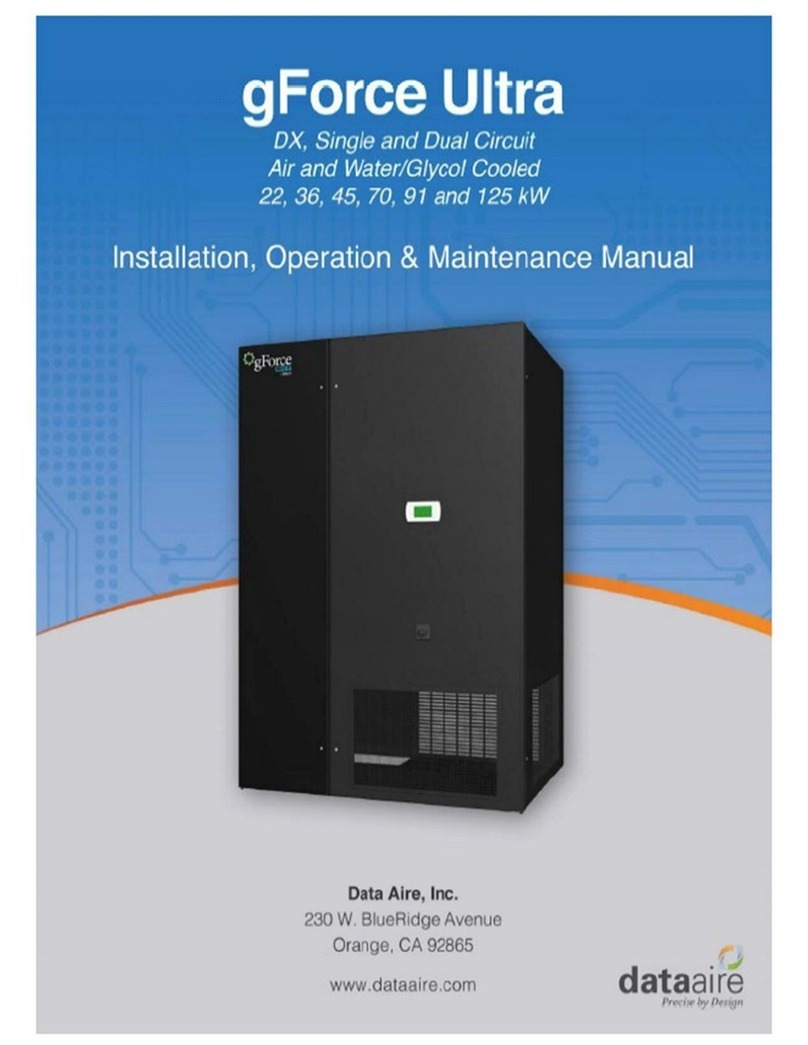
Data Aire
Data Aire gForce Ultra Instruction manual

Data Aire
Data Aire gForce Ultra User manual

Data Aire
Data Aire gForce DX series User manual

Data Aire
Data Aire gForce Ultra User manual

Data Aire
Data Aire LCS User manual
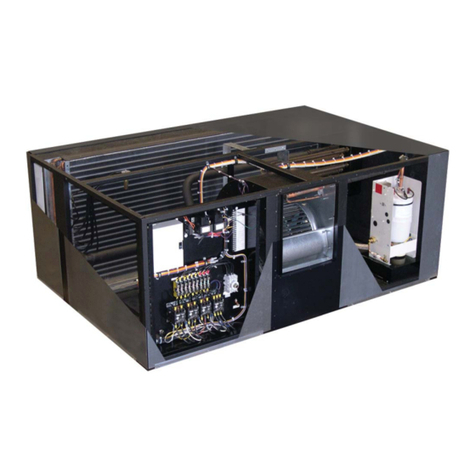
Data Aire
Data Aire LCS User manual
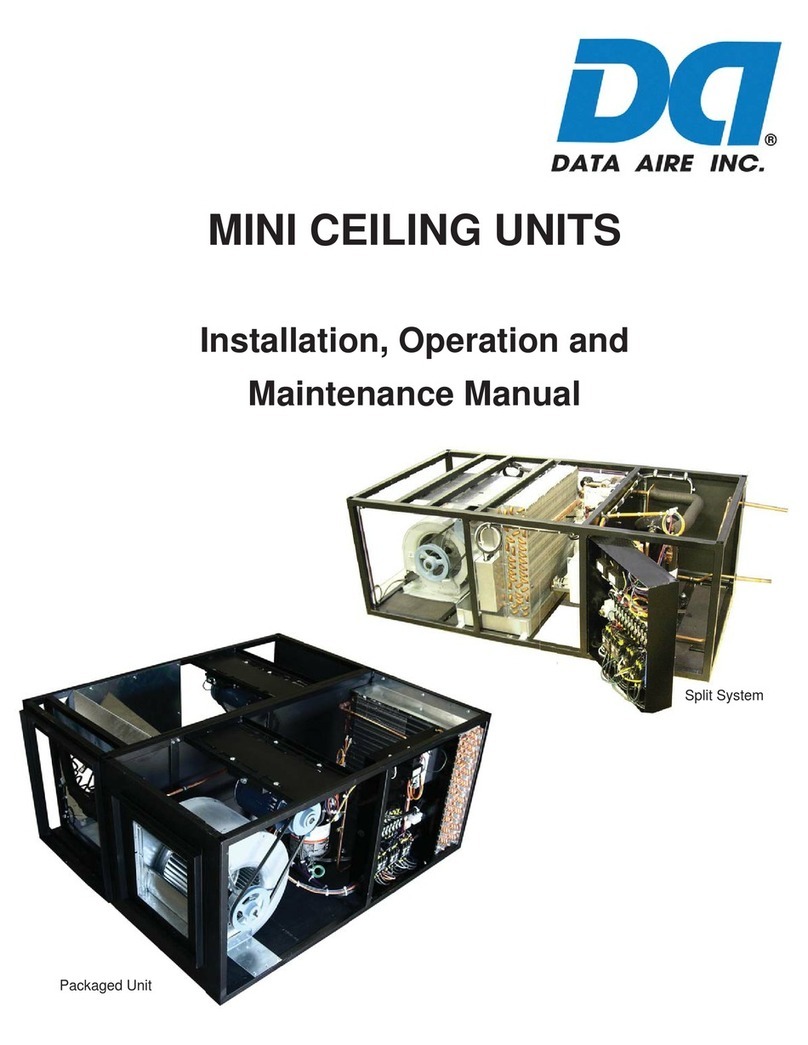
Data Aire
Data Aire DAMA-01 User manual
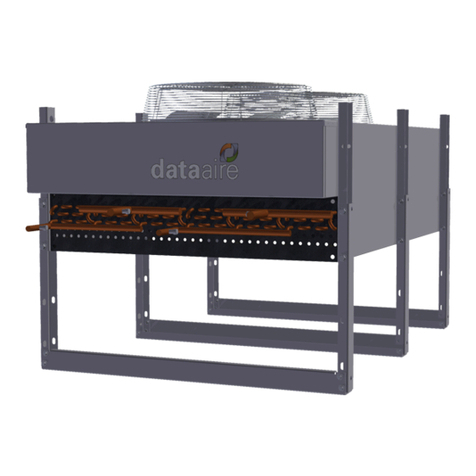
Data Aire
Data Aire DARC 03 Instruction manual
